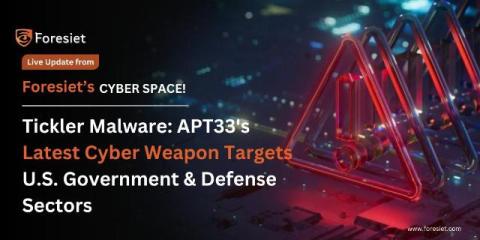Tickler Malware: APT33's Latest Cyber Weapon Targets U.S. Government and Defense Sectors
In a recent cybersecurity alert, the infamous Iranian hacking group APT33 (also known as Peach Sandstorm and Refined Kitten) has unleashed a new form of malware named "Tickler" to compromise the networks of various organizations across critical sectors in the United States and the United Arab Emirates. This latest campaign, observed between April and July 2024, has primarily targeted government, defense, satellite, and oil and gas industries.











